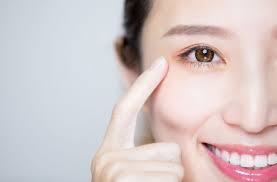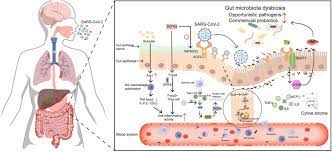I can still recall that fateful late Friday afternoon when my eye pressure soared, and I stumbled my way to my ophthalmologist’s office, the world around me shrouded in a rapidly thickening fog. The office was officially closed, but the entire eye care team had gathered, waiting just for me. With a precision instrument, one of them delicately relieved the pressure in my eyes by draining excess ocular fluid, restoring my vision.
This marked the fourth vision-threatening pressure spike I had experienced in just nine days. The concern was palpable; they feared it might happen again over the weekend. So, off I went to the emergency room, where I spent the night tethered to an intravenous tube delivering a potent anti-swelling agent.
When I later shared this harrowing experience with friends and colleagues, I was met with puzzled looks. Some didn’t grasp the importance of eye pressure or what it even meant. “I didn’t know they could measure blood pressure in your eyes,” one friend confessed.
Most people consider their vision to be of utmost importance, yet surprisingly, many lack a basic understanding of serious eye diseases. A 2016 study published in JAMA Ophthalmology found that nearly half of respondents feared losing their eyesight more than their memory, speech, hearing, or even their limbs. However, many of them “were unaware of important eye diseases.”
A recent study conducted by Wakefield Research for the nonprofit Prevent Blindness and Regeneron Pharmaceuticals revealed that one-quarter of adults at risk for retinal diseases, such as macular degeneration and diabetic retinopathy, had delayed seeking care for their vision problems.
Rohit Varma, the founding director of the Southern California Eye Institute at Hollywood Presbyterian Medical Center, laments the disparity in emphasis between eye health and general health, noting that eye diseases are often painless and progress slowly, leading people to normalize them as part of aging. If eye problems caused severe pain, he says, people would seek care more promptly.
Yet, for many individuals, accessing eye care can be challenging. Millions are uninsured, others can’t afford the costs, and many live in areas with limited access to eye doctors.
Another hurdle lies in the division between eye care and general health care. Medical insurance often covers eye care related to diagnosing or treating diseases, with some plans now including routine eye exams. However, this rarely covers eyeglass or contact lens prescriptions or their costs, requiring separate vision insurance.
As someone diagnosed with glaucoma 15 years ago, I’ve had countless pressure checks, eye exams, eyedrops, and laser surgeries. I should know better than to take my eyesight for granted. Yet, when my vision was threatened by that fog last March, I strangely remained calm.
It turned out that those pressure spikes were triggered by an adverse reaction to steroid-based eyedrops prescribed after cataract surgery. My ophthalmologist later told me I had come perilously close to losing my eyesight.
I hope my near miss with blindness can inspire others to be more conscious of their eye health. While eyeglasses or contact lenses can vastly improve one’s quality of life by correcting refractive errors, there are far more serious eye conditions that can silently creep up on you. Early detection is often the key to managing them.
Glaucoma, affecting around 3 million Americans, initially targets peripheral vision and can cause irreversible damage to the optic nerve. It’s more prevalent among African Americans and those with a family history.
Diabetic retinopathy, a complication of diabetes, damages blood vessels in the retina and affects nearly 10 million people in the U.S. Macular degeneration, which diminishes central vision over time, afflicts some 20 million people aged 40 and above.
Cataracts, causing cloudiness in the eye’s natural lens, are very common as people age. Half of those aged 75 and older have them, but they can be treated with surgery.
If you’re over 40 and haven’t had a comprehensive eye exam in a while, or ever, put it on your to-do list. Consider getting an exam earlier if you have diabetes, a family history of glaucoma, or belong to a high-risk racial or ethnic group.
Children shouldn’t be forgotten either, as various eye conditions can affect them. Refractive errors, treatable with corrective lenses, can lead to problems later in life if left unaddressed.
Leading a healthy lifestyle also benefits your eyes. “Anything that helps your general health helps your vision,” says Andrew Iwach, a clinical spokesperson for the American Academy of Ophthalmology. Minimize stress, exercise regularly, maintain a healthy diet, and quit smoking, which increases the risk of major eye diseases.
Additionally, adopt habits that protect your eyes from injury: wear sunglasses outdoors, take breaks from screens, and use protective eyewear during home activities or sports.
Numerous resources are available to educate yourself about eye health, including the Prevent Blindness website, the American Academy of Ophthalmology’s “EyeSmart” site, and the National Eye Institute.
So, take the initiative to learn and share what you discover. When you gather with loved ones, consider discussing your eye health. As Andrew Iwach wisely suggests, “When you get together for the holidays, if you aren’t sure what to talk about, talk about your eyes.








Customer Reviews
Thanks for submitting your comment!